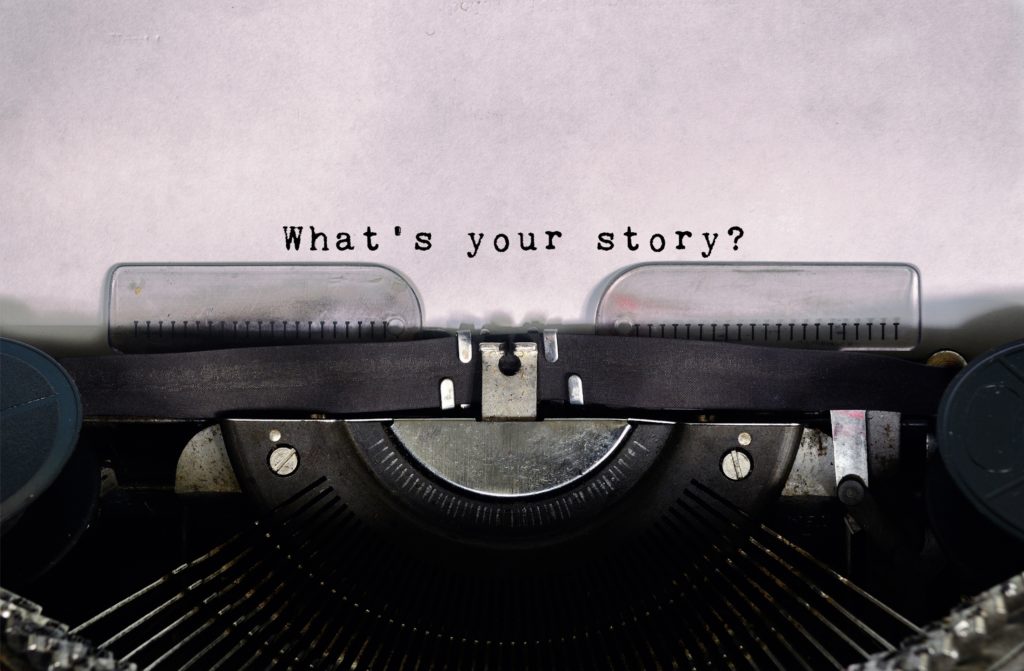Storytelling with data is the ability to breathe life and meaning into numbers so that they take root in hearts and minds. Pulling stats into a meaningful story is the best way to help people understand their significance. Whether you’re working on a written report, data visualization or a presentation to an audience, bring your story alive through a simple, three-step process.
What is storytelling with data?
Businesses struggling in the turmoil of the 2020s know that information gives them an advantage. This is why the demand for research analysts is expected to grow 25% between 2020 and 2030, according to US government figures.
Data is commonly available, but making the most of it depends on an organisation’s ability to perceive valuable clues about performance. To make sense of the numbers, analysts ‘interrogate’ the data in search of information on sales, costs, inflation, etc. By assembling everything into a meaningful version of events – a story – they can share and explain critical information.
It’s not a straightforward process. Pulling a story together isn’t easy when you’re stuck with dry data and a clammy sense of urgency. You don’t need a villain, a gun and a detective, but you do need a beginning, a middle and an end otherwise the bewitching report you were hoping to create can look as if you cobbled it together on your phone, while wearing oven gloves.
A simple, three-step process will help:
1. Finding ideas
In telling any story, the secret sauce isn’t about choosing clever words, it’s about knowing what you want to say. Don’t launch into an opening sentence until you’re sure of the idea you want to express, otherwise you risk slipping into cliches and empty phrases. The best ideas are those that are important to you. If they matter to you, they will matter to your audience.
You have to be interested in your subject if you want people to engage with what you have to say. This is especially so in business writing, where smiles and gestures aren’t going to work and everything depends on the ideas you focus on and how you express them.
How do you find interest in data, when you’re writing a sales report for example? Ideas and interest are connected to emotion. Find a useful emotion, such as success, risk, surprise, clarity, understanding or reassurance. References to breakthroughs and challenges are also helpful. Between them, these are the human values that will carry your readers along and hold their interest.
How do you know which emotion to start with? Go with whatever the data suggests. At first glance, a spreadsheet is a cold, lifeless place that isn’t big on emotion. But if you look a little closer, you’ll find a few things that will help, for example context.
The numbers for May and June might be the same. But if June was a tougher market (perhaps because of Covid, inflation or war in Europe), this might serve as a starting point for your writing. It can be translated into an emotion, such as success, which can then lead on to your next idea, for example improving performance, or boosting motivation.
2. Creating structure
Fit your ideas together by developing a structure. All stories need a beginning, middle and end – it sounds obvious, but business writing often misses one or more of these, like telling a joke without a punchline.
All too often, storytelling lacks a meaningful start. Think of your opening sentences as offering eye contact and a warm handshake. Their job is to be inviting and sincere, and to quickly carry the reader to the meatier stuff that follows. Without a strong beginning, your ideas might charge along like a runaway express. A reader – finding it hard to keep up – might lose your train of thought.
Better to start slowly and ease your way in, perhaps building pace as you go. Start by giving some context. In your opening sentence or two, explicitly say what you’re writing about. Once you’ve set the scene, begin to develop a ‘narrative arc’. This starts with context, expands into something more detailed, then dips towards a concluding thought, for example perhaps a new insight or a recommendation.
Without structure, thoughts can quickly become tangled up. A writer passionately driven by their subject can be tempted to say everything at once. On the other hand, someone manacled to writing something that they lack any interest in might produce something dry that reeks of effort. In both cases, structure helps to keep things focused.

3. Write as you speak
Writers who resort to cliches, jargon or meaningless corporate-speak are writing in a way they imagine they should write. Inauthentic writing usually comes from misplaced ideas about suppressing things, disguising truths, or impressing people. Descriptions such as “life performance solutions [with a] 24 hour energizing effect”, (socks to you and me) aren’t always successful.
Ford’s former CEO Mark Fields, for example, explained that “heritage is history with a future”, a magnificently mangled selection of words apparently picked at random. Meanwhile, the “investment layoff” revealed by media company Upworthy implies redundancies beneficial to everyone, apart from the 14 people involved.
Readers have a pulse, a sense of humour and the same disinterest in meaningless guff as the rest of us. Write for them by writing as you speak – without embellishing the truth, disguising the facts or hiding in corporate-speak. You wouldn’t use corporate waffle in an authentic conversation with friends and relatives, so why inflict it on anyone else? Best to keep it simple.
Avoiding common pitfalls
Clarity means using straightforward language and short sentences. In 2012, Wan Long, a former plant manager in Henan, China, told a local newspaper, “what I do is kill pigs and sell meat.” You can’t ask for more clarity than that. Business writing however tends to make people channel their inner grandad and resort to language they would never normally say, in the attempt to impress and match up to perceived expectations.
Impressive ideas carry far more conviction than impressive words. Develop your ideas and find a simple way of saying them. Structure your writing, spread your ideas throughout the beginning, middle and end, and avoid giving someone an excuse to glance only at your last sentence. Finally, check everything before you publish – again it sounds obvious but it’s the vital step that will spare your blushes.
Finishing touches
In thinking about your audience, it’s important to be aware of nuance and tone. Wan Long’s assessment of his work was authentic and accurate, but perhaps not particularly uplifting.
Think of data as firm pebbles of evidence, rock-solid but basically gravel. Transform numbers into flourishing meadows of colour that warm the soul by focusing on ideas and interests that resonate with you. Data can be cold and disarming. But adding heartfelt nuance and tone can make all the difference in a fund-raising campaign, in building publicity and support, or in simply winning over your audience.
How to assess something written by someone else
Cliches abound, even in the way we assess other people’s writing. To judge that something ‘reads well’ or ‘flows nicely’ isn’t particularly helpful. Instead, better to offer constructive advice by systematically deconstructing the work. Ask yourself three questions:
- Does it make sense, does the logic hold together?
- Does it go beyond what you already knew?
- Does the force of the writing carry you along with it?
If you can answer yes to these questions, then the writing successfully achieves its purpose. If not, which of the three does it fall down on? In criticising someone’s work, make it clear you’re not criticising them personally, it’s simply that the story isn’t quite delivering its objective and needs a little more work.
Free masterclass
Working Voices consultant trainer Charlie Schroeder will be explaining more on these themes, in a free masterclass webinar on Storytelling with data (July 6, 2022, 9am EST). Charlie’s background in the print media gives him an edge in helping participants transform data into clear messaging and compelling stories. His talk will serve as a great introduction to our detailed courses on Effective Business Writing and Business Storytelling Course.
Storytelling is about holding your readers’ interest from beginning to end through a few simple rules. To mine a gem of a story from the stony face of data, you just need a few simple ideas based on emotions. A clear structure will keep people engaged throughout your piece so there’s no need to squish the best bits in at the end. If you’ve made your source material come alive, and breathed new life into the data, you’ll win people over with the force of your work, simply by giving them a story worth telling.





